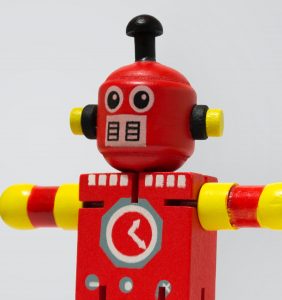The use of robots for play, education, and even therapy has increased considerably in recent years.
ROBOTS IN AUTISM
Working with robots during intervention for autism

They are playful and innovative and have several advantages for their users, especially in the field of autism.
This PhD project is carried out by M.Sc. Louise Charpiot under the supervision of Prof. Dr. Georges Steffgen from the Health and Behaviour group of the Department of Behavioural and Cognitive Sciences.
WHY ROBOTS FOR AUTISM?
The field of socially assistive robots aims to make care for autistic people more accessible, less expensive, and more effective. In this sense, research has already shown the usefulness of robot-assisted interventions for autistic children: those children who interact with robots show fewer repetitive and stereotyped behaviours, which can affect their learning, and they display more behaviours (such as joint attention and imitation) that are useful for interventions. Thus, research has shown that socially assistive robots can be useful in providing the necessary support and treatment for autistic children. On this basis, many robots have been developed to improve the social communication of autistic children and to teach them imitation, joint attention, turn-taking, and role switching. However, these robots are mostly used in research and the reality of practitioners in the field, their needs, fears, and difficulties, have not been assessed. Indeed, although these robots were developed for intervention with autistic children, they will mainly be used by health and education professionals who work with them.
ROBOTS: USEFUL FOR CHILDREN BUT ALSO FOR PRACTITIONERS
In order to ensure the success of robotic solutions developed for autism and to guarantee that they will benefit the population for which they are intended – autistic children – the perspective of practitioners must be taken into account. Therefore, we are assessing in this project whether socially assistive robots can also benefit practitioners and how this should be implemented. In this project, we aim to answer research questions such as “What are the triggers and barriers to the acceptance of robotic solutions by practitioners?”, “How should we design robot-assisted interventions with and for practitioners?”, “How will the use of these robotic solutions affect the work and well-being of practitioners?”.
The project will run from 2018 to 2023 and is carried out in collaboration with the Fondation Autisme Luxembourg (FAL) and specialized bordering centers.
TEAM MEMBERS INVOLVED IN THIS PROJECT



CONTACT
For more information about this project, please contact us at autisme@uni.lu.
NEWSLETTER
SUBSCRIBE FOR NEWS AND INVITATIONS TO PARTITIPATE IN STUDIES



